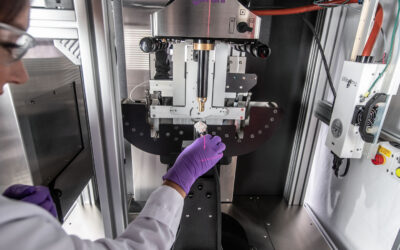OBJECTIVE:
Radiotherapy is planned to achieve the optimal physical dose distribution to the target tumour volume whilst minimizing dose to the surrounding normal tissue. Recent in vitro experimental evidence has demonstrated an important role for intercellular communication in radiobiological responses following non-uniform exposures. This study aimed to model the impact of these effects in the context of techniques involving highly modulated radiation fields or spatially fractionated treatments such as spatially fractionated radiotherapy (GRID).
METHODS:
Using the small-animal radiotherapy research platform as a key enabling technology to deliver precision imaged-guided radiotherapy, it is possible to achieve spatially modulated dose distributions that model typical clinical scenarios. In this work, we planned uniform and spatially fractionated dose distributions using multiple isocentres with beam sizes of 0.5-5 mm to obtain 50% volume coverage in a subcutaneous murine tumour model and applied a model of cellular response that incorporates intercellular communication to assess the potential impact of signalling effects with different ranges.
RESULTS:
Models of GRID treatment plans which incorporate intercellular signalling showed increased cell killing within the low-dose region. This results in an increase in the equivalent uniform dose for GRID exposures compared with standard models, with some GRID exposures being predicted to be more effective than uniform delivery of the same physical dose.
CONCLUSION:
This study demonstrates the potential impact of radiation-induced signalling on tumour cell response for spatially fractionated therapies and identifies key experiments to validate this model and quantify these effects in vivo. Advances in knowledge: This study highlights the unique opportunities now possible using advanced preclinical techniques to develop a foundation for biophysical optimization in radiotherapy treatment planning.
Butterworth KT, Ghita M, McMahon SJ, Mcgarry CK, Griffin RJ, Hounsell AR, Prise KM.






